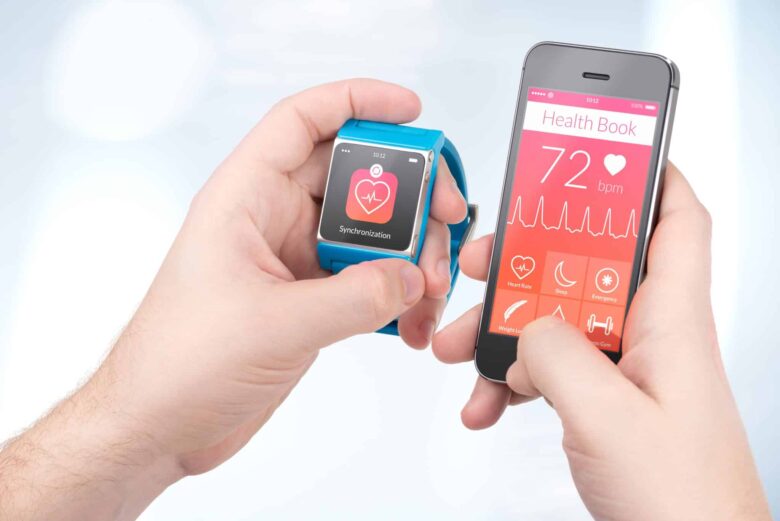Wearable health technology devices are changing the way healthcare is delivered by increasing people’s ability to track and monitor their health status in a variety of ways. These gadgets, such as fitness trackers, smartphones, and biometric sensors, monitor your health, collect useful information, and provide you with useful insights so you can take control of your health. As technology continues to evolve, wearable health technology products are having an increasing impact on healthcare. This article discusses the many health benefits of wearable technology and how they are changing the healthcare landscape.
1. Better Monitor Health Status
Wearable health technology products monitor your health, which is one of their best features. Wearable devices allow you to monitor various physiological parameters in real-time, unlike traditional methods that often require regular visits to a healthcare provider. For example, fitness trackers and smartwatches can monitor your heart rate, blood pressure, blood oxygen levels, and sleep habits. This continuous monitoring allows people to detect potential health problems early and get medical attention before they worsen. Wearable technology also allows you to track your fitness levels and activity levels. People can set and achieve their exercise goals using these devices, which track steps, calories burned, and active minutes. This real-time feedback makes people more likely to stay active, which is important for staying healthy and preventing long-term conditions such as diabetes, obesity, and heart disease.
2. Customized Care
Wearable health technology is an important part of personalized healthcare because the data it collects can be used to better tailor treatments to individual needs. The information these gadgets collect about a person’s health, lifestyle, and habits is useful. Healthcare professionals can use this data to develop a personalized treatment plan for each patient that is more successful and better suited to their needs. For example, information from wearable technology can help doctors understand how patients sleep, how stressed they are, and how active they are. With this knowledge, you can recommend lifestyle changes or actions that will overall improve your health and well-being. When it comes to managing chronic diseases, wearable technology can provide doctors with real-time information to help them make changes to medications and treatment plans.
3. Better Fitness Tracking
One of the most common ways smart health technology is used is health tracking. These gadgets provide users with a wealth of information about their workouts, allowing them to track their progress and stay motivated. You can use a fitness tracker to track your steps, distance walked, calories burned, active minutes, and more. This information is very useful for people who want to get in better shape and achieve their health goals. Wearable technology also has features that can better track your health. Many devices have built-in GPS that allows users to properly track their routes and distances. This is especially useful for runners, cyclists, and other outdoor enthusiasts who want to track their progress and find new routes.
4. Taking Care of Long-term Illnesses
People with chronic diseases can benefit the most from wearable health technology products. These devices provide continuous monitoring and real-time data, making it easier to treat diseases and improve health. For example, people with diabetes can use a continuous glucose monitor (CGM) to monitor their blood sugar levels throughout the day. This real-time information can help them make informed choices about diet, exercise, and medications, reducing the chance of problems. Wearable technology can monitor your heart rate and blood pressure and even detect irregular heartbeats in people with heart disease. This continuous monitoring allows potential problems to be detected early so that immediate medical attention can be provided. Wearable technology can also help people track how well they are adhering to their medication schedule, helping them avoid health problems by ensuring they take their medications as recommended.
5. More Patient Involvement
Wearable health technology devices give people more control over their health and wellness, promoting patient engagement. These devices provide people with real-time feedback and insights to help them make healthier choices and stick to their health goals. For example, a fitness tracker counts your steps every day and tells you what to do, which is a great way to stay active all day. Wearable technology also offers features that make users more interested, such as setting goals, tracking progress, and sharing on social networks. Many gadgets allow people to set their health and fitness goals, track their progress, and let friends and family know about their successes. The social features of wearable health technology devices can make people feel like they are part of a team and that help is available. This makes people more likely to stick to their health goals.
6. Save Money and Improve Healthcare
Wearable medical technology has the potential to reduce healthcare prices and make healthcare more efficient overall. These devices enable early detection and treatment, allowing people to avoid major health problems that require expensive treatment and hospitalization. One example is that early detection of an irregular heartbeat can prevent serious problems that would otherwise require expensive medical care. Wearable technology also reduces the number of times you have to visit the doctor in person. Remote tracking allows doctors to monitor a patient’s health data in real-time and take quick action if necessary. This makes medical facilities less busy, allowing doctors and nurses to focus on patients who need immediate care.
Conclusion
Technology worn for health reasons offers many benefits and transforms healthcare. People can take control of their health and well-being with the help of these gadgets, which provide better health monitoring and personalized care, as well as better health monitoring and chronic disease management. When you wear health technology, you get benefits like increased patient engagement, cost savings, and improved healthcare efficiency. As technology continues to develop, wearable devices will play a greater role in healthcare. This will help make the future healthier and more connected.
FAQs
1. How do the health tech products you wear make it easier to track your health?
Wearable health technology devices continuously monitor various physiological factors. This allows potential health problems to be detected early so that people can receive medical attention before their condition worsens. Staying informed can also help you manage chronic diseases.
2. Can health information technology be used to personalize care?
Yes, smart health technology collects data to help doctors ensure everyone gets the best care. Healthcare providers can view data on sleep patterns, physical activity, and other health indicators to develop personalized treatment plans and recommendations to improve overall health.
3. How can wearable technology products improve fitness tracking?
Wearable technology can track your heart rate, steps, and calories burned, among other things. They provide users with real-time feedback and help them set and achieve training goals. Features like GPS tracking, intensity monitoring, and guided workout routines make fitness tracking even better.
4. What role do smart health devices play in treating long-term diseases?
Wearable health technology gives you real-time data and continuous monitoring, which is important for the long-term management of conditions. For example, continuous glucose monitors can help diabetics monitor blood sugar levels, and heart rate, and blood pressure monitors can help people with heart disease.
5. How can wearable technology healthcare products help patients become more engaged?
Wearable technology provides people with real-time feedback and information, inspiring them to take charge of their health. Setting goals, tracking progress, and sharing on social networks are all features that drive engagement and motivation. The information collected can also be sent to healthcare professionals, making it easier for them to talk and collaborate.



